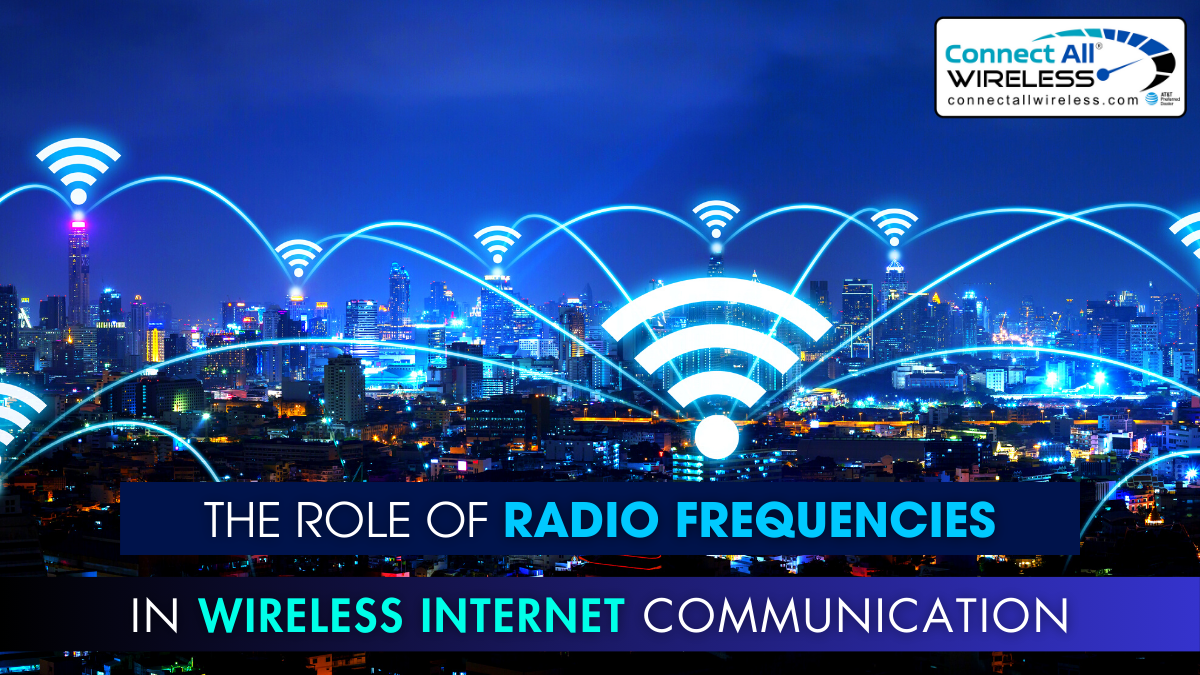The Role of Radio Frequencies in Wireless Internet Communication
April 12, 2024In today’s digital age, wireless internet communication has become ubiquitous, enabling seamless connectivity and communication across the globe. At the heart of this technological marvel lies the utilization of radio frequencies, a cornerstone of wireless communication systems. From mobile phones to Wi-Fi routers, radio frequencies play a pivotal role in facilitating the transmission of data wirelessly. In this blog post, we’ll delve into the significance of radio frequencies in wireless internet communication and explore how they enable the modern interconnected world we live in.
Understanding Radio Frequencies:
Before delving into their role in wireless internet communication, it’s essential to understand what radio frequencies are. Radio frequencies are a part of the electromagnetic spectrum, ranging from a few kilohertz to hundreds of gigahertz. These frequencies are utilized for transmitting data wirelessly through modulated electromagnetic waves.
Enabling Wireless Internet Communication:
Wireless internet communication relies heavily on radio frequencies to transmit data between devices and access points. Devices such as smartphones, laptops, and IoT devices communicate with each other and with the internet through wireless networks. These networks utilize radio frequencies to establish connections and transmit data packets.
Wi-Fi Technology:
One of the most prevalent forms of wireless internet communication is Wi-Fi. Wi-Fi operates in the unlicensed radio bands, primarily the 2.4 GHz and 5 GHz bands. Wi-Fi routers emit radio signals that devices can connect to, enabling them to access the internet without the need for physical cables. The Wi-Fi standard employs various modulation techniques to encode data onto radio waves, allowing for high-speed wireless communication.
Cellular Networks:
Cellular networks, such as 4G and 5G, also rely on radio frequencies for wireless communication. These networks use a combination of licensed and unlicensed radio bands to provide internet connectivity to mobile devices. Cellular towers transmit radio signals that are received by smartphones and other mobile devices, enabling users to access the internet on the go.
Spectrum Allocation:
The allocation of radio frequencies is carefully regulated to avoid interference and ensure efficient use of the spectrum. Regulatory bodies allocate specific frequency bands for various applications, such as broadcasting, aviation, and telecommunications. These allocations help prevent overcrowding of the spectrum and ensure that different wireless technologies can coexist without interfering with each other.
Challenges and Future Trends:
While radio frequencies have enabled remarkable advancements in wireless internet communication, they also pose challenges. The increasing demand for wireless bandwidth, coupled with the limited availability of spectrum, presents a significant challenge for future wireless communication systems. Researchers are exploring technologies such as cognitive radio and spectrum sharing to make more efficient use of the available spectrum and alleviate congestion.
Conclusion:
In Michigan, access to the best wireless internet relies heavily on the effective utilization of radio frequencies. These frequencies form the backbone of wireless communication systems, enabling seamless connectivity for residents and businesses alike. From Wi-Fi networks in homes to cellular towers providing coverage across the state, radio frequencies play a pivotal role in ensuring high-speed internet access. As technology continues to advance, optimizing the use of radio frequencies will be crucial in delivering reliable and fast wireless internet services to communities throughout Michigan. With an understanding of the importance of radio frequencies, providers can strive to offer the best wireless internet in Michigan, meeting the ever-growing demand for connectivity in the digital age.


